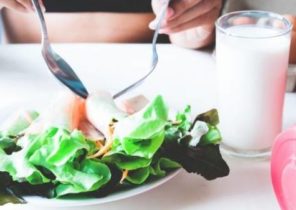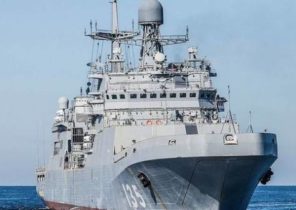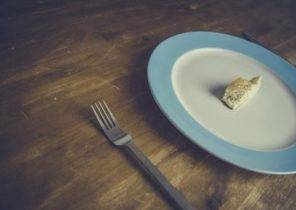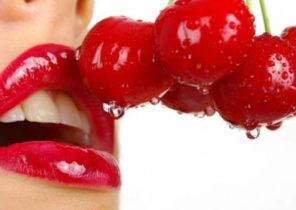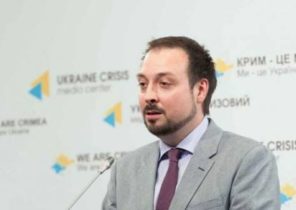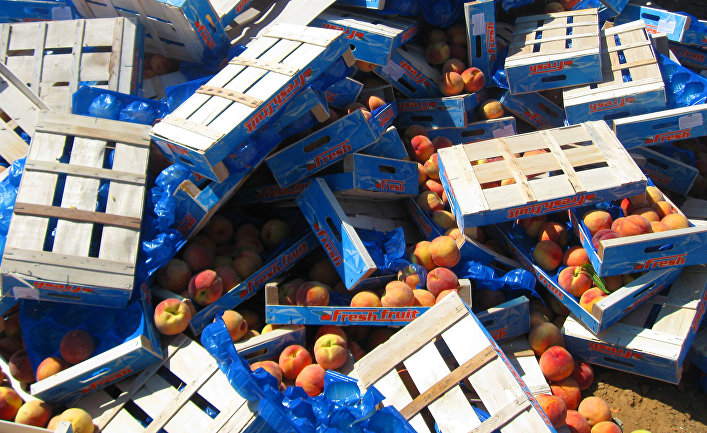
Since the introduction of Russian food embargo against the West has been more than two years. It has an impact on the manufacturing sector and consumer behavior.
The effects of the embargo are usually considered through the prism of those countries to which it applied, meanwhile the impact on the internal Russian situation was discussed not so much. The question is, how the closures affected the market for agricultural and food products, as well as the behavior of the Russian consumers?
List of unwanted products is increasing
In August 2014 Russia imposed an embargo on food products from EU, USA, Canada, Australia and Norway. In August 2015 to the list of added Albania, Montenegro, Iceland and Liechtenstein. From January 2016, the Russian food embargo has also extended to Ukraine and Turkey (October restrictions against that country to soften).
As a result, in the years 2014-2016, Russia has closed its market to countries that in 2013 provided more than half of Russian imports of pork, poultry, fish, dairy and seafood, and vegetables.
Why is the food embargo?
In early 2010, Russia adopted a food security Doctrine, which was designed to reduce the country’s dependence on imported goods. On the basis of this document in July 2012 approved the State program of development of agriculture and regulation of markets of agricultural products, raw materials and food for 2013-2020.
It is possible to create a system of subsidies and direct payments to the priorities of the industry, the functioning of which was allocated to 2.28 billion rubles. In the document a set of minimum production and ratios of self-sufficiency (the share of domestic production in total consumption) for the major food types, which should reach Russia by 2020.
Prior to the embargo, most of all Russia was dependent on fruit imports (domestic production of blanket is slightly less than 40% of demand), meat and meat products, fish and seafood, milk and dairy products (about 80%) and vegetables (about 90%). At the same time, in areas such as the production of grain, potatoes and oilseeds (except soybean), she acted as a net exporter, or its dependence on exports was small.
This means that the Russian embargo on Western food products has raised the most scarce region. The wide geographical scope of the embargo, which included the world’s key exporters of food products, has not allowed Russia to fully compensate for the deficit by increasing the volume of purchases in other countries.
Arose on the market served to protect domestic producers from foreign competitors, became the impetus for the development of domestic production and incentives that may tempt consumers to switch to Russian goods. This is consistent with the goal of improving food self-sufficiency, which is achieved in conditions of free trade with foreign producers would be difficult because of the relatively low competitiveness of Russian agriculture.
In line with this assessment followed the decision to extend the sanctions until the end of 2017, which notes that they give “to domestic farmers, who fear the return of Western competitors, a longer planning horizon of the investment.” Thus it can be expected that in the coming years, apparently, the lifting of the embargo will not happen. It will be possible only when Russia will reach its goals related to food security.
The lack of food — the dilemma of the Russian consumer
The closure of the Russian market in the conditions of limited possibilities of rapid increases in production and a sharp weakening of the ruble led to a jump in prices for food products. In the first two years of the embargo (that is, from August 2014 to July 2015 and August 2015 to July 2016) prices in the category “foodstuff and beverages” increased at an annual rate of 18.1% and 11,0% respectively, while for the period from August 2013 to July 2014, this figure was 6.9%.
The sharpest rise in prices among the products that fall under the embargo, was observed in the category fish and seafood (in August 2016 price was 42.6 per cent higher than in August 2014), fruit and vegetables (plus 36%) and dairy products (plus 21.2 per cent). Overall consumer prices in August 2016 was 23.6% higher than in August 2014. The jump in inflation combined with economic crisis and the deterioration of the situation on the labour market led to the decline in real incomes that, according to Rosstat, in 2015 fell by 5% compared to 2013. The impoverishment of the population are reflected in changing patterns of food consumption in Russia. According to Rosstat, in 2015 compared to 2013 (the last full year without the embargo) decreased consumption of fruits, meat, sugar, milk and dairy products, and growth in the consumption of vegetables and potatoes. The consumption of eggs and bakery products has not changed.
Changes in the structure of consumption shows that in the diet of Russians has decreased the share of expensive products due to the increase in the share of relatively cheap. This assessment is confirmed by the data research company Euromonitor, according to which in Russia in recent years there has been an increase in the consumption of relatively cheap poultry meat to take the place of more expensive beef. A shortage of some agricultural products, the impoverishment of the population, and the lack of competition from Western companies started at the same time factors that contributed to the mass adulteration of food products and the emergence of significant discrepancies between the real structure and the data indicated on the labels.
Estimates of the Rosselkhoznadzor, often falsifiziert dairy products, which is added palm oil and reconstituted milk. Rosselkhoznadzor, in response to the magnitude of the phenomenon, began to publish a list of honest companies that do not introduce misleading consumers.
Massive fraud of food has affected the way Russians shop. According to Nielsen, in Russia, the growing popularity of private brands of large retail chains that ensure the competitive price and quality. There has also been an increase in the consumption of traditional Russian food made from local ingredients without the addition of foreign components.
The difficult path to self-sufficiency
The closure of the market to foreign goods and the implementation of the program of development of agriculture became a strong impetus for growth in the Russian agricultural sector. Meanwhile, at the same time there was an unexpected factors which slow down its development.
First, the weakening of the ruble led to higher prices for foreign equipment, technology and other resources that are used in agriculture. Availability of alternative Russian counterparts are in many cases restricted, and this increases the cost of upgrading and increase in production capacity of the Russian agricultural sector.
Secondly, in response to the devaluation of the ruble and rising inflation, the Central Bank of Russia strongly raised interest rates. As a result of increased cost of loans, and this reduced the possibilities for acceleration of investment. Thirdly, it is reported that in the payment of state subsidies has been slow, and this complicates the implementation of investment and further planning in reliance on state aid.
Fourthly, the impoverishment of the population leads to a drop in demand for relatively expensive scarce goods, reducing benefits from the absence of Western competitors.
According to the Ministry of agriculture of the USA, among the groups of products prohibited for import in the Russian Federation, the strongest growth was observed in production of poultry meat (24.6 per cent in 2013-2016). The growth was driven by increased domestic demand for this product due to its relatively low price. Tool for the development of industry also served as a high level of consolidation (top 10 producers provide about 40% of total production) and a modern production base (about 60% of the products are produced at factories built or completely re-equipped after 2008).
Significantly increased the volume of pork production (plus 15.4% in 2013-2016). In this case, the process also contribute to the effects of consolidation (top 20 companies account for 60% of production). The outbreak of African swine fever accelerate consolidation and market exit of small producers. Although pork is more expensive than poultry, the demand remains high due to its widespread use in the Russian kitchen.
Meanwhile, the embargo severely damaged the production of beef (a decline of 3.2% in 2013-2016). Still beef in Russia was the main byproduct of the dairy industry. At the same time this sector is characterised by fragmentation, which greatly complicates investments in increasing productivity. Has further restricted the investment of the fact that due to the worsening economic situation of the Russians, the demand for beef, which is much more expensive than other types of meat decreased. The drop in the volume of production (1.5%) was also observed in most of the dairy industry, where the main barrier to development is the fragmentation of the resource base.
In the production of fruit and vegetables the main factor hindering the development is the specificity of the Russian market, where, according to the Ministry of agriculture of the USA, 64% and 70% of the demand respectively cover small farms or plots of land, bringing it beyond the scope of modern retail channels. Performance does not contribute to the fragmentation and lack of specialisation. An additional obstacle is the lack of necessary infrastructure for storage and transportation of fruit and vegetables. As a result, in the period of the crop supply exceeds demand, and later there is a deficit. Nevertheless, the growth of investment in the industrial cultivation of vegetables and fruits in the coming years may lead to an increase in production volume.
From the isolation of the Russian market benefited little fishing industry. Mariculture (cultivation of marine organisms by fishing) is developing very slowly due to lack of investment in industry, which requires large investments. In the end, there is a shortage of modern equipment, production technologies and special feeds. In addition in 2015 the largest private companies suffered large losses due to affecting their businesses epidemic fish.
Special attention should be paid to the interest of investments in the Russian agricultural sector from Asia. Vietnamese group TH Group is going to invest in the construction of dairy farms near Moscow $ 2.7 billion. In the production of milk in the suburbs, with the support of Chinese investors plans to invest in a Thai company Charoen Pokphand Group. It can be expected that in the coming years, Asian companies will increase their presence on the Russian market, using the absence of Western competitors.
Past cannot be revisited
Data for the last two years show that the Russian embargo, at least in the short term brought negative effects such as for agriculture and for consumers. The maintenance of sanctions and further the appropriation of public subsidies does not guarantee that Russia will reach self-sufficiency in all areas of production, which outlined the Doctrine of food security.
Also, keep in mind what the personal cost to the Russian market for insulation by reducing the level of wealth and consumption. In addition, it begs the question remains whether the current cost-effective enterprise, receiving strong state support, if in the future the embargo will be lifted, and the market will come back foreign competitors.
Regardless of the response we can expect that in the model of Russian consumption over a long period of sanctions there will be profound changes. As sang Okudzhava, “the past cannot be revisited” if the embargo will be lifted, Western exporters, apparently, see is not the market that they remember the summer of 2014.
Jakub Olipro — doctoral student, Higher school of Economics in Warsaw, economist of Credit Agricole Bank Polska.


